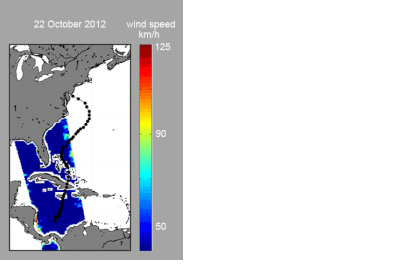ESA’s Soil Moisture and Ocean Salinity (SMOS) mission showed its versatility by capturing unique measurements of Hurricane Sandy, that hit the Caribbean and northeastern US in late October 2012.
As its name suggests, the Soil Moisture and Ocean Salinity (SMOS) satellite was designed to measure how much moisture is held in soil and how much salt is held in the surface waters of the oceans. However, this state-of-the-art Earth Explorer mission has demonstrated that its instrumentation and measuring techniques can be used to offer much more. Since SMOS has the ability to see through clouds and it is little affected by rain, it can also provide reliable estimates of the surface wind speeds under intense storms.
SMOS carries a novel microwave sensor to capture images of ‘brightness temperature’. These images correspond to radiation emitted from the surface of Earth, which are then used to derive information on soil moisture and ocean salinity. Strong winds over oceans whip up waves and whitecaps, which in turn affect the microwave radiation being emitted from the surface. This means that although strong storms make it difficult to measure salinity, the changes in emitted radiation can, however, be linked directly to the strength of the wind over the sea.
As it orbited above Sandy, the satellite intercepted parts of the Hurricane at least eight times as the storm swept over Jamaica and Cuba around 25 October, until its landfall in New Jersey, US, four days later. The data from these encounters have been used to estimate the speed of the wind over the ocean’s surface.

